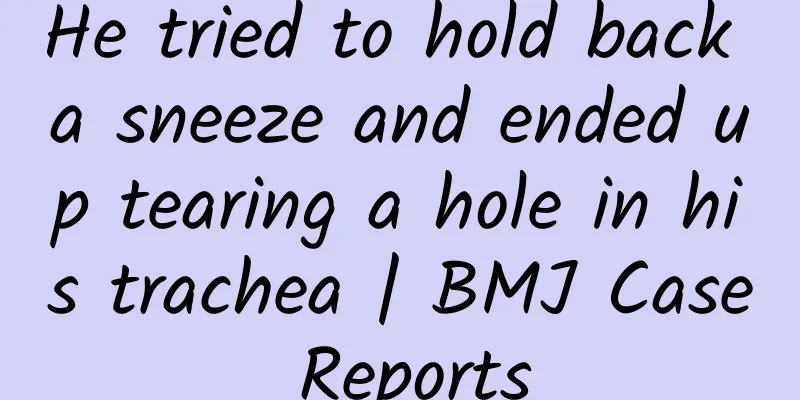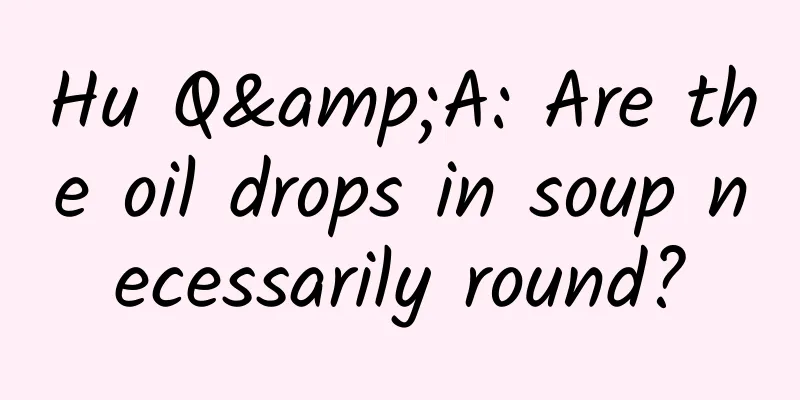He tried to hold back a sneeze and ended up tearing a hole in his trachea | BMJ Case Reports

|
This article is transferred from: Research Circle (ID: keyanquan) If you've ever tried to hold back a sneeze, a new case report might make you think twice. Lateral radiograph of the patient's neck. The white arrow points to the surgical emphysema in the superficial neck space. The black arrow points to the surgical emphysema in the retropharyngeal space. Source: Case report Original work by Emily Cooke Translated by Liu Tingjun Edited by Wei Xiao A man suffered a tiny hole in his trachea after trying to hold a sneeze, a case that has never been reported before. The bizarre incident happened when the man was driving when he had a hay fever attack and suddenly wanted to sneeze, but he chose to pinch his nose and close his mouth to force the sneeze. If you sneeze with your mouth and nose closed, the pressure in your upper airway can be more than 20 times higher than normal. In this case, the excessive pressure caused a 2 x 2 mm tear in the man's trachea. When he was taken to the emergency room, he was in excruciating pain, with swelling on both sides of his neck that made it difficult to move. When the doctor examined him, he could hear faint crackling sounds. However, he had no problems breathing, swallowing or speaking. A neck X-ray showed the man had surgical emphysema, a condition in which air accumulates deep beneath the skin. A subsequent computed tomography (CT) scan showed the tear was between the third and fourth thoracic vertebrae in his neck. Air had also accumulated in the chest cavity between the lungs. Contrast (enhanced) CT scan of the neck and chest. (A) Sagittal section: The white arrow points to the posterior tracheal tear at the level of the third and fourth thoracic vertebrae, and the yellow arrow points to the surgical emphysema in the neck. (B) Axial section: The white arrow points to the tracheal tear. Source: Case report Doctors concluded that the tear was caused by "a rapid increase in pressure in the trachea when sneezing with the nose pinched and mouth closed." Doctors determined that the man did not need surgery. However, the man was monitored in the hospital for two days to ensure that his blood oxygen levels and other vital signs remained stable. He was then discharged with painkillers and hay fever medication. Doctors also told him not to do any strenuous exercise for two weeks. Five weeks later, a CT scan showed that the laceration had completely healed. The man ultimately suffered only minor injuries, but his doctor wrote in a report of the case published Dec. 1 in BMJ Case Reports: “This should serve as a warning to others.” "Everyone should be advised not to pinch the nose and close the mouth simultaneously when sneezing, as this may cause tracheal perforation," the case report authors wrote. Spontaneous tracheal tears are extremely rare but can be fatal. Only a few cases have been reported, usually as a result of physical trauma or injuries from medical procedures, such as surgery to remove the thyroid gland or intubation. Doctors should assess whether surgery is needed to repair the injury, depending on the location of the tear and the patient's vital signs, the case report authors wrote. It's extremely rare for a held sneeze to cause this kind of damage, but it's certainly not impossible. This article is for informational purposes only and does not provide medical advice. Original link: https://www.livescience.com/health/in-worlds-1st-known-case-man-tears-windpipe-from-holding-sneeze Paper Information 【Title】Spontaneous tracheal perforation following a sneeze 【Author】Rasads Misirovs, Gary Hoey, Calum Carruthers and Samit Majumdar 【Journal】BMJ Case Reports 【Date】December 01, 2023 【DOI】https://doi.org/10.1136/bcr-2023-255633 【Link】https://casereports.bmj.com/content/16/12/e255633 |
<<: There is only one benefit of eating camellia oil, and it’s different from what you think!
Recommend
The role and efficacy of Changpu
Everyone must have seen calamus in life, especial...
The cold wave is coming, and some fat people are in trouble! Why is the fat on the body not resistant to freezing?
The recent drastic drop in temperature in many pa...
What are the functions, effects and contraindications of Achyranthes bidentata?
Achyranthes bidentata is not the knee of a cow. I...
The efficacy and function of red hemp
As a traditional Chinese medicine, red hemp provi...
Ministry of Culture and Tourism: 135 million people traveled across the country during the 2024 New Year's Day holiday
During the New Year's Day holiday in 2024, th...
What to add to chicken bone grass soup
As we all know, chicken bone grass is a tradition...
What are the effects of Tusanqi?
Among various Chinese medicinal materials, Tu San...
Are ants supporters of "feminism"? What is the real ant society like...
Ants are one of the most fascinating social biolo...
The efficacy and function of cherry water
Cherry water is a common medicinal ingredient in ...
Why can you walk a thousand miles if you hold your urine, but you can’t walk an inch if you have diarrhea? You may never hold your urine again after reading this!
As the saying goes, there are three urgent things...
The efficacy and function of Viburnum birchii
For many Chinese people, traditional Chinese medi...
Where did the red underwear for the birth year come from?
The New Year is coming, and from the city to the ...
The efficacy and function of Hongbaierwan fruit
Traditional Chinese medicine is a Chinese traditi...




![[Issue 17] Random Talk: "Zheli" Scientist - Chen Niannian: Dedicated to Serving the Country Throughout His Life for Nuclear Power](/upload/images/67f0a5d10a3a1.webp)




